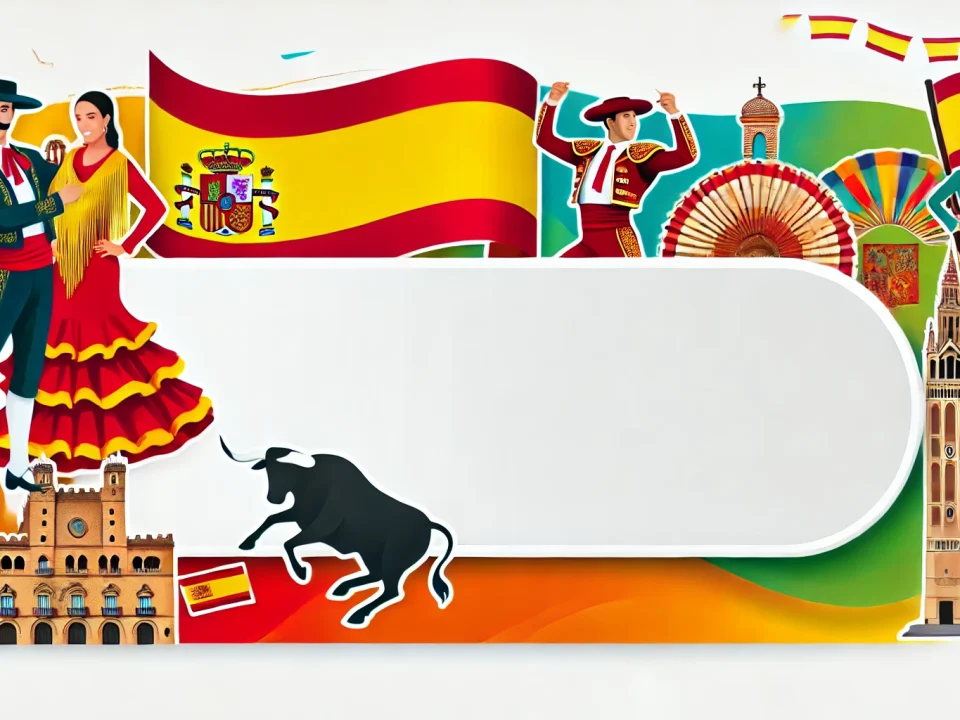
Mastering Common Expressions with Tener in Spanish
October 9, 2024
Farm Animals in Spanish (Animales de Granja)
October 19, 2024Learn Basic Spanish Directions (Direcciones)
Learning a new language is like setting out on an exciting journey, and understanding how to give and ask for directions is an essential skill for any traveler or language learner. In this guide, we’ll walk through the fundamental Spanish vocabulary and grammar rules you need to navigate your way around Spanish-speaking regions confidently. By the end, you’ll be able to ask for directions and understand basic instructions.
Understanding the Basics: Vocabulary for Directions in Spanish
Before diving into how to use directions, let’s start with some foundational vocabulary. Learning these key terms will be your first step toward mastering Spanish directions:
- Right – Derecha
- Left – Izquierda
- Straight – Recto
- Across – Cruzar
- Behind – Detrás
- In front of – Delante de
- Next to – Al lado de
- Near – Cerca de
- Far – Lejos
- Here – Aquí
- There – Allí
- Go – Ir
- Stop – Parar
How to Ask for Directions in Spanish
Knowing how to politely ask for directions is crucial. Here are some common phrases you can use:
Key Phrases:
- ¿Dónde está…? – Where is…?
- ¿Cómo llego a…? – How do I get to…?
- ¿Podría ayudarme a encontrar…? – Could you help me find…?
- ¿Está lejos…? – Is it far…?
- ¿Cuál es la mejor manera de llegar a…? – What is the best way to get to…?
Example Sentences:
- ¿Dónde está la estación de tren? – Where is the train station?
- ¿Cómo llego al museo? – How do I get to the museum?
- ¿Podría ayudarme a encontrar el supermercado? – Could you help me find the supermarket?
Giving Directions in Spanish
Once you know how to ask for directions, the next step is understanding how to give them. Here are some essential phrases and examples:
Key Phrases:
- Gira a la derecha – Turn right
- Gira a la izquierda – Turn left
- Sigue recto – Go straight
- Cruza la calle – Cross the street
- Está al lado de… – It’s next to…
- Está enfrente de… – It’s in front of…
Example Sentences:
- Gira a la derecha en la próxima esquina. – Turn right at the next corner.
- Sigue recto por dos cuadras. – Go straight for two blocks.
- Cruza la calle y verás el parque a tu izquierda. – Cross the street and you’ll see the park on your left.
Incorporating Grammar: Prepositions and Verbs
In Spanish, prepositions like “de” (of), “en” (in), and “a” (to) are crucial when giving directions, as they help indicate the relationship between locations.
Key Prepositions:
- A la derecha de – To the right of
- A la izquierda de – To the left of
- En frente de – In front of
- Detrás de – Behind
- Al lado de – Next to
Using Verbs:
Spanish verbs change form based on who is giving the direction and when. For giving directions, the imperative form is essential. For example:
- Ir (to go) becomes ve – Go
- Girar (to turn) becomes gira – Turn
- Seguir (to continue) becomes sigue – Continue
Examples Using Verbs and Prepositions:
- Sigue recto hasta el semáforo, y luego gira a la izquierda. – Continue straight to the traffic light, and then turn left.
- La farmacia está al lado del banco. – The pharmacy is next to the bank.
- Ve en frente de la biblioteca para tomar el autobús. – Go in front of the library to catch the bus.
Practice Makes Perfect
As with anything, practice is key to mastering directions in Spanish. Here are some practical tips:
- Role-Playing: Practice with a partner by role-playing common scenarios, such as asking for directions to a café or giving directions to a local landmark.
- Flashcards: Create flashcards with the vocabulary and directions phrases to reinforce learning.
- Use Real-World Maps: Take a city map and practice giving directions from one point to another, using the vocabulary you’ve learned.
- Listen and Repeat: Use Spanish language audio guides or apps to listen to native speakers giving directions, then repeat the phrases.
Conclusion
Learning directions in Spanish opens a world of opportunities, whether you’re traveling, navigating a new city, or simply improving your language skills. By understanding key vocabulary, mastering essential phrases, and practicing regularly, you’ll soon navigate Spanish-speaking environments like a local. Keep practicing, be patient, and enjoy the journey of learning Spanish.
Remember, cada paso cuenta — every step counts. ¡Buena suerte en tu aprendizaje! (Good luck with your learning!)
House and Furniture Vocabulary in Italian (La Casa e i Mobili)
French Vocabulary


